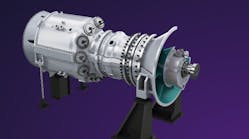ArcelorMittal and Mistubishi Begin Pilot Carbon Capture Unit on Blast Furnace Off-Gas to Decarbonize Steel Production
ArcelorMittal, along with its partners Mitsubishi Heavy Industries (MHI), BHP, and Mitsubishi Development, have begun operating a pilot carbon capture unit on the blast furnace off-gas at ArcelorMittal Gent in Belgium.
If successful, the pilot unit will operate for one to two years at Gent to test the feasibility of progressing to full-scale deployment of MHI’s carbon capture technology, the Advanced KM CDR Process, which is expected to capture a sizeable portion of the Gent site emissions.
To start, the pilot will be testing with blast furnace off-gases and off-gases from the hot strip mill reheating furnace. The pilot also has the potential to be trialed to capture other steelmaking gases like reformer flue gas from a Direct Reduced Iron (DRI) plant.
While ArcelorMittal is assisting the trial in Gent with MHI supplying its proprietary carbon capture technology and supporting the engineering studies, BHP and Mitsubishi Development, key suppliers of high-quality steelmaking raw materials to ArcelorMittal’s European operations, are supporting trial funding.
The trial will operate in two phases. The first phase will involve separating and capturing the CO2 from the top gas of the blast furnace at a rate of around 300 kg of CO2 a day. The second phase will include testing the separating and capturing of CO2 in the off-gases in the hot strip mill reheating furnace, which burns a mixture of industrial gases, including coke gas, blast furnace gases, and natural gas.
The development of the carbon capture solution at Gent is expected to serve multiple CO2 transport and storage projects under development in the North Sea region and contribute to global technological solutions required for decarbonizing steel production.
“ArcelorMittal Belgium's decarbonization efforts can be summarized in three axes,” said ArcelorMittal Belgium’s CEO Manfred Van Vlierberghe. “The first axis focuses on energy efficiency: reuse of waste heat and renewable energy; in our second axis, we are replacing coal with a combination of gas and electrification and finally, the third axis, is based on circular use of carbon - CCU and CCS to achieve completely carbon-free processes.”
The EU has an objective to achieve an annual CO2 storage capacity of 50 million tons by 2030, as proposed under the Net-Zero Industry Act. Moreover, the International Energy Agency (IEA) estimates that CCUS technology is required to apply to more than 37% of primary steel production by 2050, equivalent to 399 Mtpa of CO2, for the Net Zero Emissions scenario.





